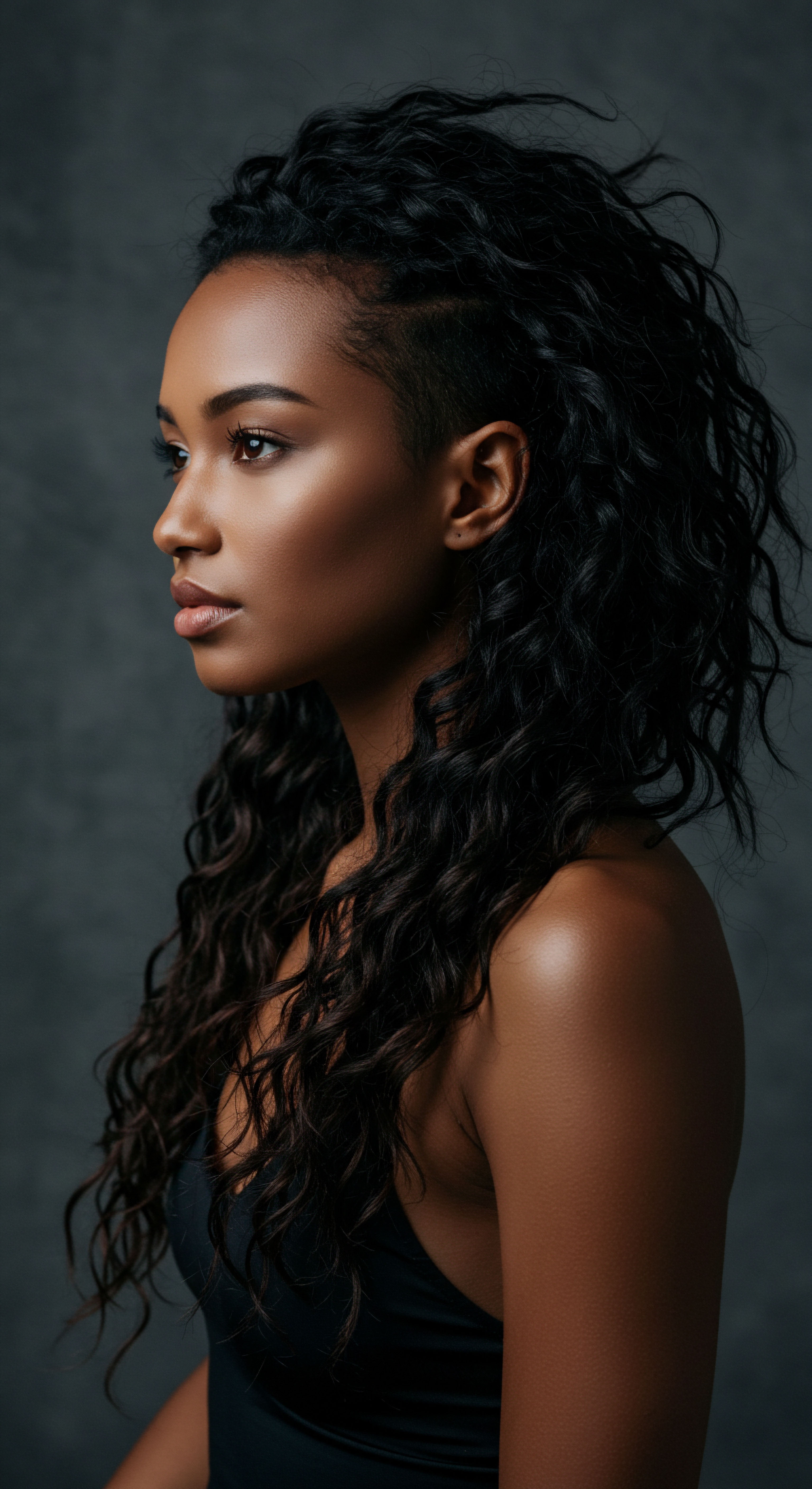
Fundamentals
The Curly Hair Structure, in its simplest expression, refers to the inherent physical configuration that causes hair strands to bend, coil, or wave rather than lying straight. This distinct physical appearance is not a random occurrence; it is a meticulously orchestrated biological phenomenon, deeply rooted in the very beginnings of hair growth beneath the scalp. For those new to the world of textured hair, particularly within the rich heritage of Black and mixed-race hair, understanding this foundational concept unlocks a pathway to truly tending to one’s strands. It provides a primary comprehension, a guiding light for navigating the unique needs and celebrated beauty of hair that springs from the scalp with a spirited rhythm.
At its most basic, the core of this structural difference resides within the hair follicle itself. Think of the hair follicle as the blueprint holder, the guiding hand shaping each strand as it emerges. Unlike the perfectly round follicles that give rise to straight hair, curly hair originates from follicles that possess an asymmetrical or oval shape. This architectural deviation means the hair strand does not grow out uniformly.
Instead, it begins its journey with a curve, dictating the eventual curl, wave, or coil that becomes visible. The greater the ovality or flatness of the follicle, the tighter the resulting curl will appear. This fundamental distinction, the follicle’s very form, lays the groundwork for the diversity seen across the spectrum of curly textures.
The curly hair structure begins its journey within the hair follicle, whose asymmetrical shape dictates the hair’s characteristic bends and coils.
Beyond the follicle’s immediate shape, the angle at which the hair emerges from the scalp also contributes to its curl pattern. A hair follicle angled into the skin encourages the hair to spiral as it grows, whereas a vertically oriented follicle typically produces straight hair. This interplay of follicle shape and growth angle offers a clear explanation for why a single head of hair might display a range of curl patterns, perhaps looser waves at the crown and tighter coils near the nape. Each section of the scalp can harbor follicles with subtle variations, leading to a unique mosaic of textures.

The Hair Strand’s Inner World
The visible hair strand, often called the hair shaft, is a marvel of biological engineering. It consists of three primary layers, each contributing to its overall integrity and how it behaves:
- Cuticle ❉ This outermost layer serves as the hair’s protective shield, composed of overlapping, scale-like cells resembling shingles on a roof. In curly hair, these cuticles are often raised, which can render the strand more susceptible to moisture loss and frizz.
- Cortex ❉ Positioned beneath the cuticle, this middle layer holds the protein keratin, the primary structural component of hair, along with pigments that bestow hair its color. The cortex is also responsible for hair’s elasticity and tensile strength. Within curly hair, the distribution of keratin is uneven, contributing to the natural bends and twists of the strand.
- Medulla ❉ The innermost layer, often absent in finer hair types, is a loosely arranged core. While its direct role in curl formation is less prominent, it adds to the overall structural complexity of each hair strand.
The very arrangement of these layers, their thickness, and the distribution of their components collectively determine the hair’s final texture and its unique requirements for care. Understanding this basic anatomy is a foundational step toward appreciating the beauty and particular needs of textured hair.
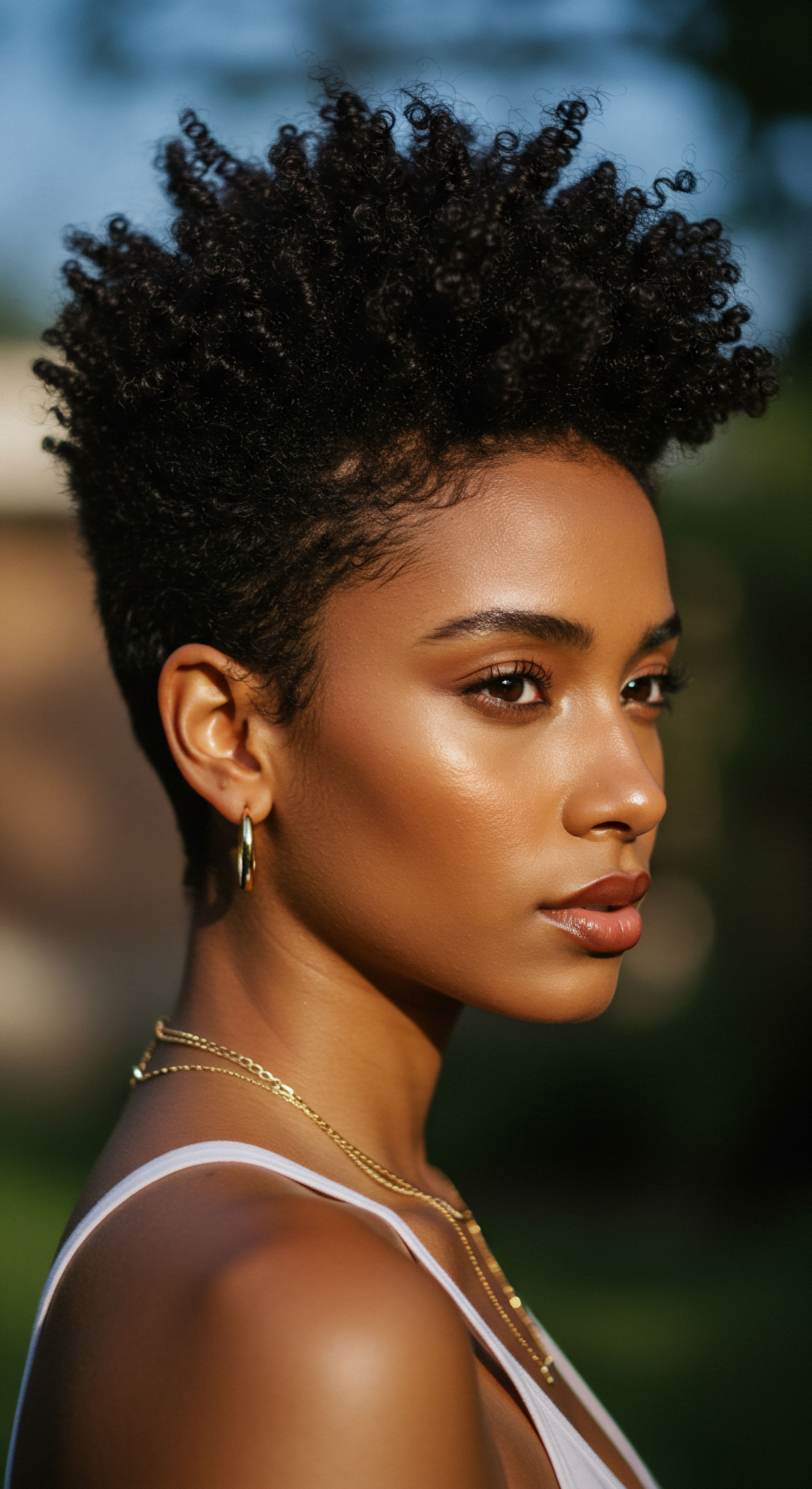
Intermediate
Moving beyond the foundational insights, the Curly Hair Structure reveals itself as a more intricate interplay of genetics, cellular activity, and molecular bonds, all contributing to the distinct curl patterns observed in textured hair. For those seeking a deeper comprehension of their strands, this intermediate understanding bridges the gap between basic observation and the nuanced world of hair science, particularly relevant for daily and weekly care rituals within the Black and mixed-race hair community. The definition here expands to encompass the dynamic forces shaping each curl.
The genetic underpinnings of curly hair are far from simplistic. While it is often described as a dominant trait, suggesting a straightforward inheritance pattern, the reality is a polygenic phenomenon, meaning multiple genes collaborate to determine the final curl phenotype. Specific genes, such as TCHH (trichohyalin) and EDAR, have been identified as influential in shaping hair texture across various populations. Trichohyalin, a protein within the inner root sheath of hair follicles, contributes to stabilizing and hardening this sheath, thereby molding the growing hair shaft.
Variations in these genes can lead to differences in hair curliness, influencing the odds of possessing straight, wavy, or tightly coiled hair. This complex genetic blueprint explains why curl patterns can vary significantly even within families, with siblings or fraternal twins exhibiting distinct textures.
The intricate dance of genetics, involving multiple genes like TCHH and EDAR, orchestrates the diverse manifestations of the curly hair structure.

Molecular Architecture of the Curl
The macroscopic curl we admire is a direct consequence of microscopic molecular arrangements within the hair shaft. Keratin, the primary protein composing hair, is not uniformly distributed throughout a curly strand. Instead, it accumulates unevenly, leading to inherent bends and twists. This asymmetrical distribution of keratin is a key factor in the hair’s ability to curl.
Beyond protein distribution, chemical bonds play a significant role in defining the hair’s shape and resilience:
- Disulfide Bonds ❉ These are strong, permanent chemical linkages formed between sulfur atoms in the amino acid cysteine, a building block of keratin. The quantity and placement of these bonds within the hair’s cortex directly influence the tightness of the curl. A greater number of disulfide bonds generally corresponds to a tighter curl pattern. These bonds cannot be broken by water or heat alone, requiring chemical treatments like relaxers or perms to alter the hair’s permanent shape.
- Hydrogen Bonds ❉ Unlike disulfide bonds, these are temporary and highly reactive to water and heat. They form between water molecules and the keratin structure of the hair. Hydrogen bonds are the reason curls can spring to life in humid conditions or lose their definition when wet, only to reform as the hair dries. Heat styling tools temporarily manipulate these bonds to reshape the hair.
The balance and interaction of these molecular bonds dictate how hair responds to environmental factors and styling efforts. For textured hair, which often experiences higher humidity levels and more frequent water contact during styling, the behavior of hydrogen bonds is particularly noteworthy.

Porosity and Moisture Dynamics
A significant aspect of the Curly Hair Structure, especially pertinent to textured hair, is its inherent porosity. Hair porosity refers to the hair’s ability to absorb and retain moisture. The raised cuticle layers characteristic of many curly and coily hair types can create gaps, making the hair more open to absorbing moisture quickly, yet also losing it just as rapidly.
This unique moisture dynamic is a primary reason why textured hair is frequently described as dry or prone to dryness, despite its higher lipid content in some instances. The twists and turns of curly strands impede the natural sebum, produced by the scalp, from traveling efficiently down the entire length of the hair shaft, leaving the ends particularly vulnerable to dehydration.
| Porosity Type Low Porosity |
| Cuticle Structure Tightly closed, smooth cuticles |
| Moisture Absorption Difficult to absorb moisture, but retains it well once absorbed |
| Care Considerations for Textured Hair Requires gentle heat to open cuticles, lightweight products, and humectants to draw moisture in. |
| Porosity Type Medium Porosity |
| Cuticle Structure Slightly raised, balanced cuticles |
| Moisture Absorption Absorbs and retains moisture effectively |
| Care Considerations for Textured Hair Generally versatile, benefits from balanced hydration and protein. |
| Porosity Type High Porosity |
| Cuticle Structure Raised or gapped cuticles |
| Moisture Absorption Absorbs moisture quickly, but loses it rapidly |
| Care Considerations for Textured Hair Needs rich moisturizing products, heavier creams, and oils to seal moisture; protein treatments can assist. |
| Porosity Type Tailoring hair care to porosity is a crucial step in maintaining the health and vitality of textured hair. |
This structural predisposition to dryness underscores the importance of hydration strategies in textured hair care. Rather than focusing solely on water application, which can paradoxically lead to brittleness and frizz if not sealed in, the emphasis shifts to “conditioning” hair with products containing hydrophobic ingredients like plant oils and butters. These ingredients create a protective barrier, preventing excessive moisture loss and smoothing the cuticles. Recognizing the influence of fiber curvature on hair dryness is truly significant for developing effective hair care solutions tailored to individuals with African hair types.

Advanced
The Curly Hair Structure, when viewed through an advanced lens, transcends mere physical description to become a complex interplay of biological, genetic, and even cultural forces, offering a deeply insightful explication of its full significance. For the expert, the researcher, or the corporate leader in hair care, this understanding moves beyond surface-level care to address the long-term implications, successes, and inherent vulnerabilities within the context of textured hair, particularly Black and mixed-race hair heritage. The meaning here extends into the very fabric of identity and the scientific frontiers still being charted.
The precise determination of curl pattern is a fascinating area of ongoing scientific inquiry. While the oval shape and curvature of the hair follicle are well-established as primary determinants, the cellular processes within the follicle itself exhibit a striking asymmetry in curly hair. In straight hair, cells within the follicle divide and produce proteins uniformly, leading to a round fiber. Conversely, in curly hair, the mitotic zone around the dermal papilla, the core of the hair bulb, displays an uneven distribution of cells.
This cellular dissymmetry, coupled with the differential expression of certain keratins and enzymes on the concave side of the curved follicle, directly contributes to the elliptical shape of the hair fiber and its propensity to curl. For instance, studies indicate more pronounced expression of K14 and Transglutaminase-1 in the outer and inner root sheaths, respectively, on the concave side of curly hair follicles, a stark contrast to the symmetrical expression seen in straight hair. This micro-level asymmetry is a profound insight into the mechanics of curl formation.
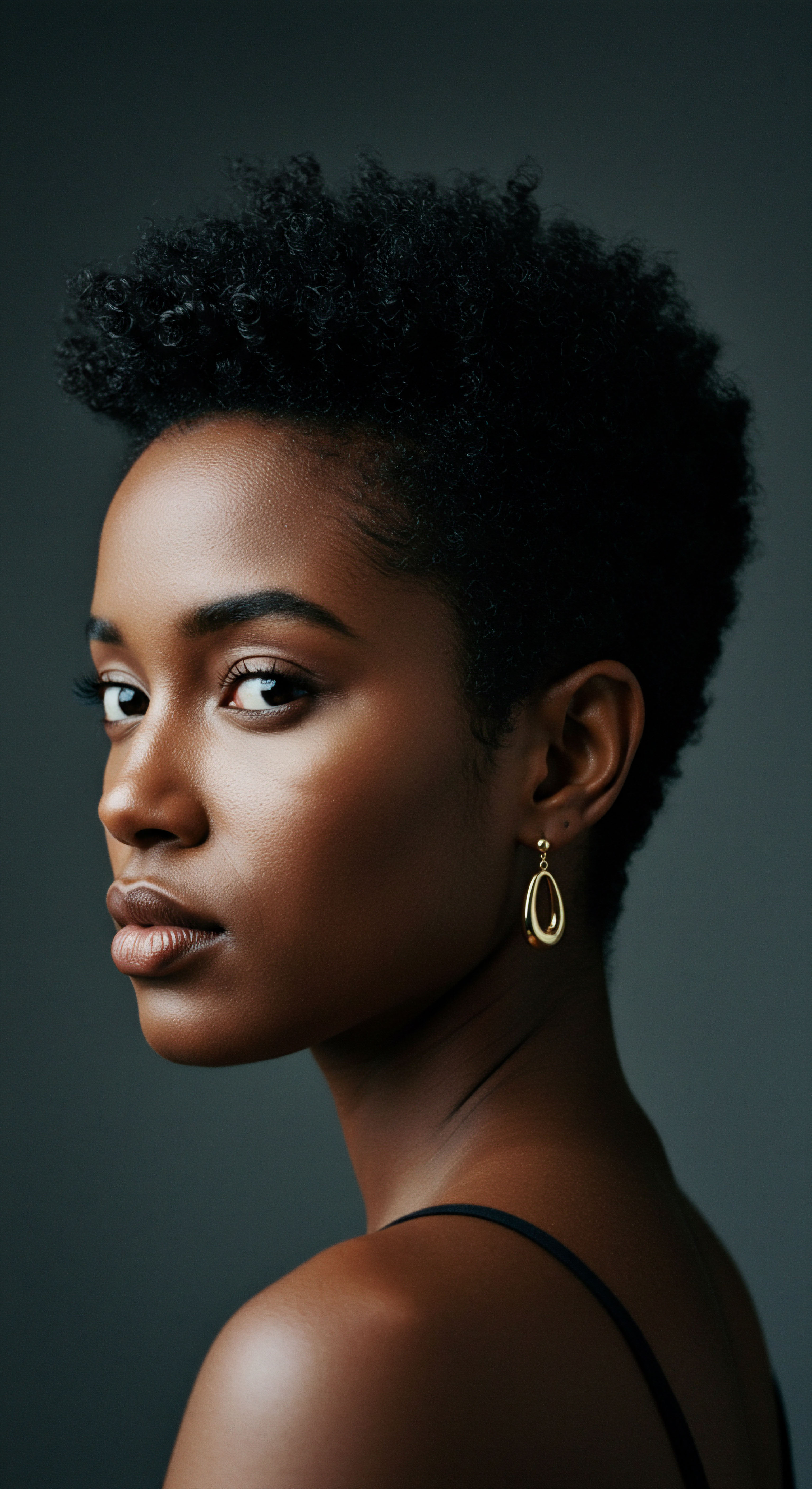
Genomic Architecture of Hair Curl
The genetic landscape influencing hair curl is a polygenic system, where multiple genes interact to produce the diverse range of curl phenotypes. Beyond TCHH and EDAR, other genes such as WNT10A and GATA3 are implicated in hair follicle cycling, development, and shaft structure. WNT10A, for example, is linked to epithelial proliferation and differentiation within the hair follicle, with variations associated with tightly coiled hair conditions like “woolly hair syndrome”. GATA3 plays a role in hair shaft structure via the Wnt-β-catenin signaling pathway in the inner root sheath.
The polymorphic variations, or SNPs (Single Nucleotide Polymorphisms), within these genes, and their synergistic effects, directly impact the expression and activity of relevant gene products, thereby influencing the macroscopic curl pattern. This complexity highlights that while a “curly gene” exists, it is a chorus of genetic instructions, not a solo performance.
A particularly compelling, if sometimes overlooked, aspect of hair genetics involves the selective pressures that shaped hair diversity across human populations. Research suggests that curly hair may have offered an evolutionary advantage in warm climates, aiding in thermoregulation by helping to keep the head cool. This hypothesis, put forth by researchers like Muthukrishnan Eaaswarkhanth and colleagues, observed significant changes in certain KAP (keratin-Associated Protein) cluster genes in African populations that are largely absent elsewhere.
This indicates that environmental or sexual selective pressures after human dispersal from Africa likely contributed to the wide spectrum of hair types we observe today. Such findings provide a unique, data-backed perspective on why certain curl patterns are more prevalent in populations of African descent, moving beyond mere aesthetic observation to a deeper understanding of human adaptation.
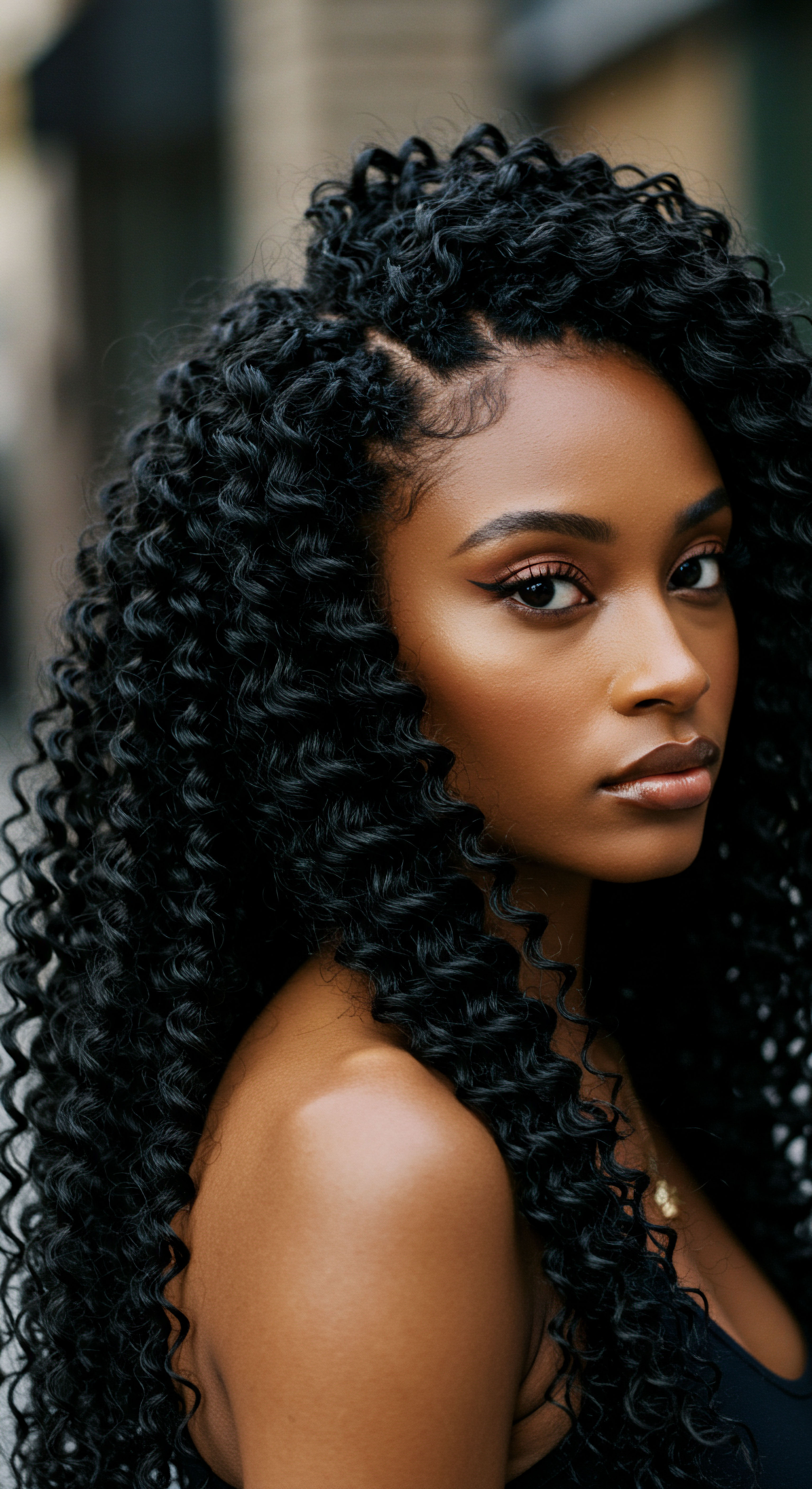
Biomechanical Vulnerabilities and Care Paradigms
The structural definition of curly hair also encompasses its biomechanical properties, which inherently differ from straight hair. The high curvature of curly hair, particularly Afro-textured hair, creates points of weakness along the strand, rendering it more susceptible to mechanical extension and prone to premature failure and breakage. This is partly attributed to a higher density of disulfide bonds in Afro-textured hair, which, while contributing to its characteristic tight curls, can also reduce its elasticity compared to straighter hair types.
The lipid content also varies, with European hair exhibiting higher unsaturated lipid content internally, leading to lower water permeability than Afro-textured hair. This implies that while Afro-textured hair might have a higher lipid content overall, its structural characteristics can still lead to increased dryness and fragility.
| Hair Type Straight |
| Follicle Shape Round |
| Keratin Distribution Symmetrical |
| Disulfide Bonds Fewer, more even |
| Moisture Retention Higher, easier sebum distribution |
| Hair Type Wavy |
| Follicle Shape Slightly oval |
| Keratin Distribution Slightly asymmetrical |
| Disulfide Bonds Moderate |
| Moisture Retention Moderate |
| Hair Type Curly/Coily |
| Follicle Shape Oval to flat elliptical |
| Keratin Distribution Asymmetrical |
| Disulfide Bonds More, tighter spacing |
| Moisture Retention Lower, difficult sebum distribution |
| Hair Type These biomechanical variations necessitate distinct care approaches to preserve hair health and minimize damage. |
This inherent structural vulnerability has profound implications for hair care product development and consumer education. For textured hair, the conventional notion of “hydration” as simply adding water is incomplete; the true goal is “conditioning” the hair to manage its hydrophobicity and protect against water-induced damage, which can lead to swelling and increased cuticle step-height. Organic cosmetics, rich in plant oils and butters, serve to coat the hair fiber, creating a barrier that prevents excessive moisture penetration and smooths the raised cuticles. This shift in understanding from simple hydration to strategic conditioning represents a significant advancement in culturally attuned hair care.
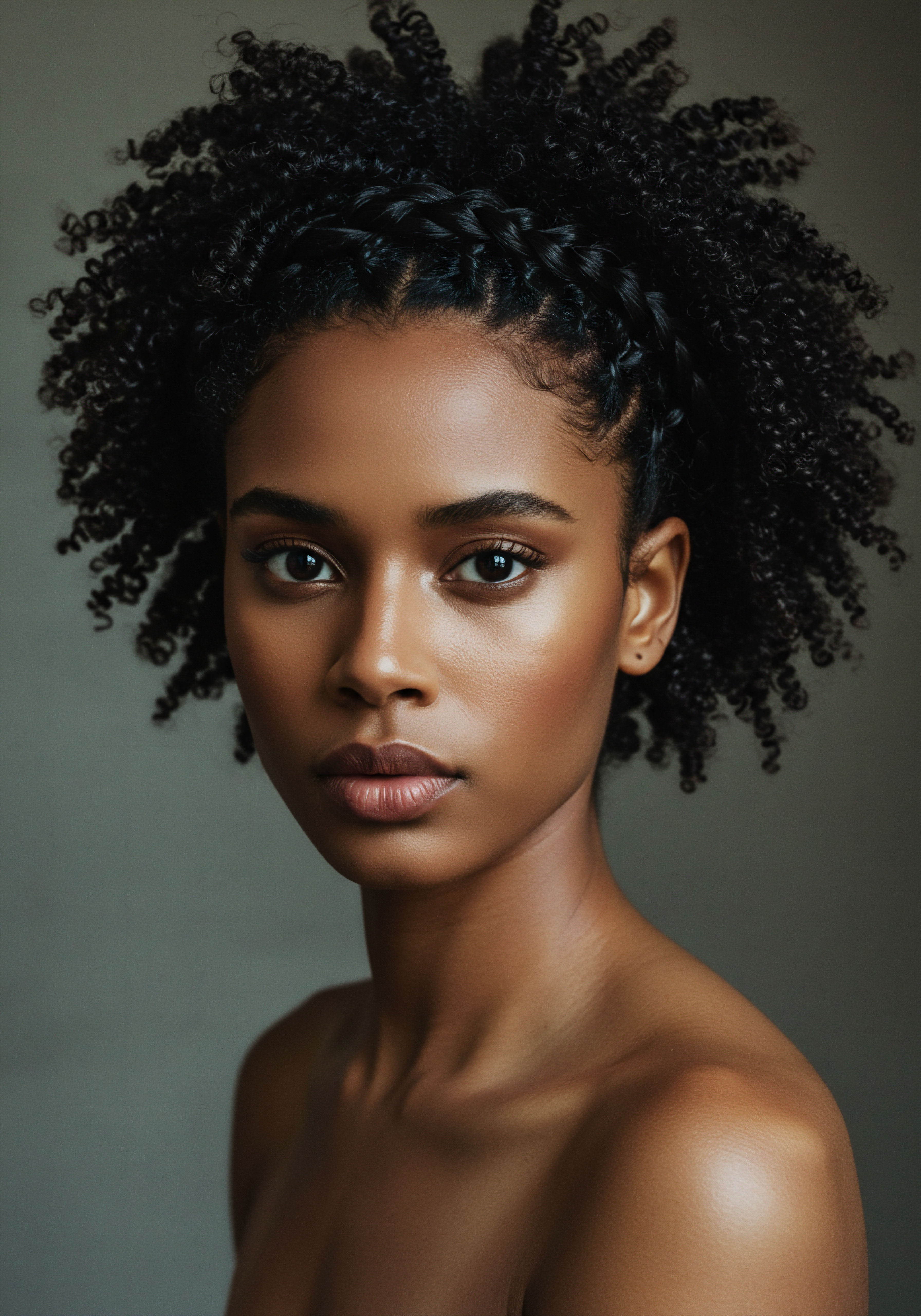
Cultural Significance and Identity
The Curly Hair Structure, particularly as it manifests in Black and mixed-race communities, holds a deeply resonant cultural and social significance. Beyond its biological explanation, hair in ancient African societies was a powerful symbolic tool, communicating social status, heritage, religion, and identity. Hairstyles like braids, twists, and dreadlocks were not merely aesthetic choices; they were narratives, conveying messages about background and life events.
The historical context of colonialism and slavery brought about a concerted effort to erase African cultures, including the devaluation of natural hair textures. This resulted in persistent messages that natural hairstyles were “unprofessional” or “unmanageable,” pushing individuals toward chemical straightening to conform to Eurocentric beauty standards. This historical pressure created a complex relationship with natural hair, where its texture became a battleground for identity and acceptance.
Today, the embrace of natural curly and coily textures is a powerful act of self-acceptance and cultural reclamation, signifying a return to ancestral roots and embodying the “Black is Beautiful” movement. The Curly Hair Structure, in this light, is not just a scientific curiosity but a profound symbol of resilience, heritage, and individual expression. It represents a living connection to a rich past and a vibrant present, demanding respect and specialized understanding that extends beyond the laboratory to encompass the human experience.
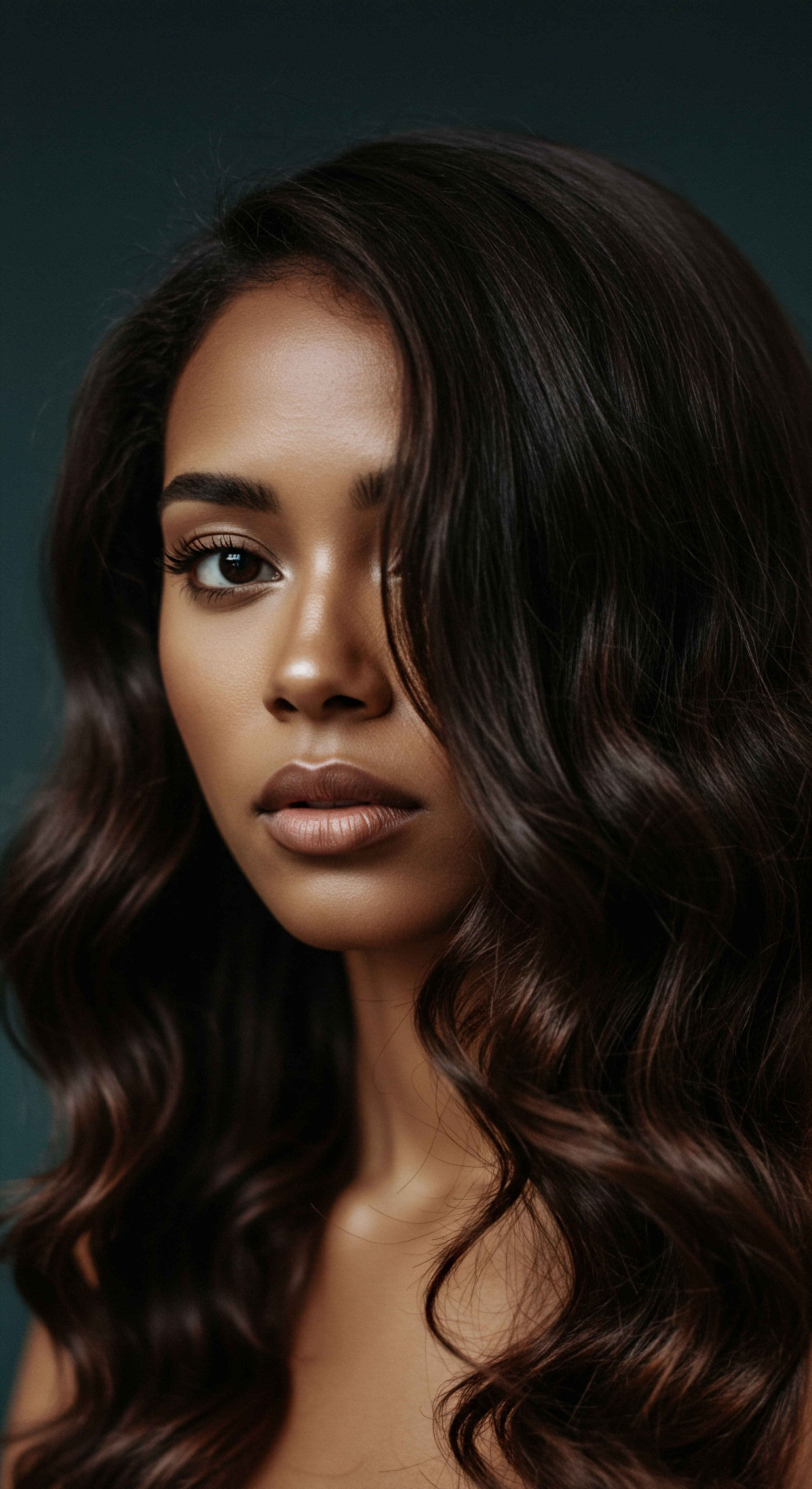
Reflection
The Curly Hair Structure stands as a magnificent testament to nature’s diversity, a unique expression of biology that intertwines with human heritage and personal identity. We have explored its origins in the follicle’s curved embrace, traced its molecular architecture through the intricate dance of keratin and disulfide bonds, and acknowledged its unique biomechanical vulnerabilities. Yet, its true meaning extends far beyond the scientific definitions. For many, particularly within the vibrant tapestry of Black and mixed-race communities, the texture of their hair is a deeply personal narrative, a legacy whispered through generations, and a crown worn with pride.
Understanding this structure, therefore, is not merely about scientific classification; it is about cultivating a deeper respect for individual beauty, fostering mindful care practices, and celebrating the inherent artistry of hair that spirals and coils with a life of its own. This journey into the heart of the curl reveals a story of adaptation, resilience, and profound self-acceptance, inviting us all to appreciate the multifaceted beauty that springs from the scalp.

References
- Adhikari, K. et al. 2016. A genome-wide association scan in admixed Latin Americans identifies loci influencing facial and scalp hair features. Nature Communications, 7, 10815.
- Adlam, A. et al. 2021. The science of hair moisturization ❉ A review. International Journal of Cosmetic Science, 43(3), 263-272.
- Byrd, A. D. & Tharps, L. D. 2001. Hair Story ❉ Untangling the Roots of Black Hair in America. St. Martin’s Press.
- Chambers, S. 2017. Hair ❉ A Cultural History. Bloomsbury Academic.
- Duverger, O. & Morasso, M. I. 2014. To grow or not to grow ❉ hair morphogenesis and human genetic hair disorders. Seminars in Cell & Developmental Biology, 25-26, 22-33.
- Eaaswarkhanth, M. et al. 2010. Genetic variation in the keratin-associated protein (KAP) cluster and its association with human hair morphology. Human Biology, 82(2), 171-182.
- Franbourg, A. et al. 2003. African hair morphology ❉ An electron microscopy study. Journal of Cosmetic Science, 54(5), 453-463.
- Jablonski, N. G. 2006. Skin ❉ A Natural History. University of California Press.
- Mkentane, K. et al. 2017. Geometric classification of scalp hair for valid drug testing, 6 more reliable than 8 hair curl groups. PLoS ONE, 12(2), e0172834.
- Pośpiech, E. et al. 2018. Variation in the RPTN gene may facilitate straight hair formation in Europeans and East Asians. Journal of Dermatological Science, 91(3), 331-334.
- Thibaut, S. et al. 2007. Human hair keratin network and curvature. International Journal of Dermatology, 46, 7-10.
- Westgate, G. E. Ginger, R. S. & Green, M. R. 2017. The biology and genetics of curly hair. Experimental Dermatology, 26(6), 483-490.